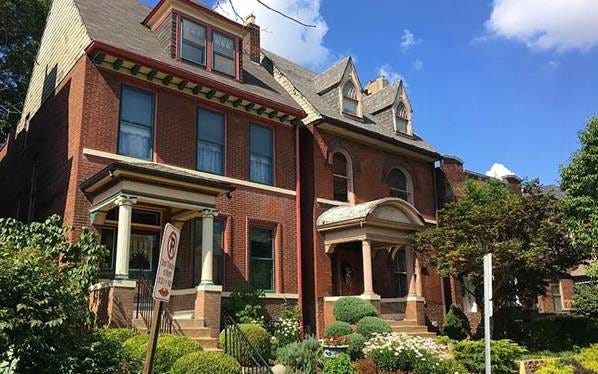
I went to St. Louis over the weekend, and I was reminded how much I love the way St. Louis neighborhoods look. The city has wonderful vernacular architecture that leads to beautiful neighborhoods at a human scale. That’s not true everywhere, since St. Louis has lost a lot of character through abandonment and demolition, and the scars of highway construction exist throughout the city. But St. Louis is perhaps the quintessential city with “great bones”.
If you’re not familiar with St. Louis, take a look at the image above, and this one below:

A view of homes in St. Louis’ Shaw neighborhood. Source: stlouisneighborhoodsguide.com
Over the years I’ve heard urbanists of all types say that Rust Belt cities were primed for a comeback, someday, because they have “great bones”. But how can we define “great bones” and make it a strategy for growth? This is an especially good question given the work-from-home era we live in now, and where we work and live aren’t necessarily connected anymore.
As for me, I view “great bones” as the quality of the built environment of a city. It’s subjective, yes, but there’s some agreement among people about community quality. Given a chance, people will choose neighborhoods (and I think we all choose neighborhoods or communities, not entire cities or metro areas) that provide us with the housing we like, good schools for our children, parks, shopping amenities, social gathering spaces, and a welcoming environment. The desire for public transit, walkability and multimodal accessibility, and the mix of housing will vary with each person, as would the level of public-facing or private-facing view wants to give.
I laid out my so-called “Big Theory” of American urban development several years ago, and brought it up again last month. I think how people look at whether a place has “great bones” or not falls somewhere into the Big Theory framing. Essentially, people prefer the kind of built environment of particular times in history, and the infrastructure and amenities that come from them, and I think they come in a general order. The strongest preferences are for new places among the public because they’re, well, new. Contemporary housing and commercial development designs, upgraded roadway and utility infrastructure that’s not in danger of deterioration. There’s also a preference for much older places that have a development character that’s difficult to replicate in our cities today. Lastly there’s a vast middle type of built environment. It’s new enough to be missing the character of older places, and old enough to be missing the contemporary comforts you might want.
For me, a good proxy for assessing development quality and character is looking at U.S. Census housing data. A table that’s been included in the Census and American Community Survey data for decades is Table S2504: physical characteristics of occupied housing units. I look specifically for Census estimates on when housing structures were built, and that gives me a sense of what kind of “bones” a place may have.
Read the rest of this piece at The Corner Side Yard.
Pete Saunders is a writer and researcher whose work focuses on urbanism and public policy. Pete has been the editor/publisher of the Corner Side Yard, an urbanist blog, since 2012. Pete is also an urban affairs contributor to Forbes Magazine's online platform. Pete's writings have been published widely in traditional and internet media outlets, including the feature article in the December 2018 issue of Planning Magazine. Pete has more than twenty years' experience in planning, economic development, and community development, with stops in the public, private and non-profit sectors. He lives in Chicago.
Photo: A view of St. Louis’ Central West End neighborhood. Source: stlouisneighborhoodsguide.com, courtesy of The Corner Side Yard.












